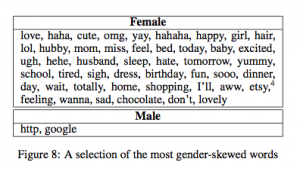Dear readers,
After an unreasonably long hiatus, I am now once more able to carve out time for this blog. I hope to never abandon you for so long again. And now, for the latest installment . . .
On Saturday, November 17, while at the National Communication Association conference in Orlando, FL, I attended a performance by Tallahassee-based performance troupe Mickee Faust, and I really liked it. I liked their intentionally bad jokes. I liked their skewering of the bourgeois dessert negotiation. I liked their Alice in Wonderland take on the TEA Party. I was with them the whole way.
I was even with them when they sang a song about abortion and the constitution dressed as Supreme Court justices and then put on Klan hoods. At least at first. Or, it didn’t jolt me out of the space of watching the performance or make me want to walk out or anything. I texted a picture of it to my colleague who studies the rhetoric of race and sexuality in Supreme Court decisions, like “you missed this!”
But afterwards I found myself really wanting to talk about it. I showed my conference roommate the picture. I texted it to my two friend-colleagues with whom I discuss race and sexuality. I didn’t know why, yet. I just needed to tell people.
It wasn’t until one friend wrote back “What?! I do not understand! Why aren’t people objecting? This seems really wrong” that I was able to identify what I was feeling as unsettled. So then, a couple more texts with that friend and the other one who whom I’d sent it, and a phone call, and I figured I needed to blog about it. (As, to be honest, was suggested by the friend quoted above.)
Abortion rights are important. The denial of abortion rights is absolutely a means by which women have it enforced on them that they are second class citizens. (And non-uterus-having humans are also reminded that uterus-havers are inferior and incapable of making their own decisions about said baby-incubating organ.)
This is not the same as a systematic campaign of violence intended to terrorize a population.
There is a case to be made for systematic terror campaigns against abortion doctors—but even then it is nothing like the same scale. This is not a case where every member of a population lives under the constant threat of being identified as a target when visually identified through racist optics.
When you compare everything to the worst-case scenario, the worst-case scenario loses its meaning. As my colleague T.J. Tallie put it in discussing how people have been responding to the recent escalation of violence between Israel and Hamas in Gaza, “can we not directly compare nations to Nazis right now? Not to make Nazis particularly ‘evil’, but it cheapens the historical reality.”
This is also the problem with the “gay rights are like civil rights” discourse. Gay folks—the white, middle class gay folks who tend to want to get married—are not systematically denied access to basic services and rights. They’re denied access to a privileged-person state-sanctioned economic benefit. And yes, it is a helpful thing to have access to because it’s a means by which resources are distributed, but it supports an incredibly unequal system wherein capital can exploit productive wage laborers because those workers are exploiting reproductive laborers. And just throwing around civil rights analogies erases the substantial difference in privilege in the two cases.
Ultimately, these things aren’t comparable. And I’m perhaps most distressed by the fact that the troupe had otherwise progressive politics. They were perhaps a little too self-congratulatory on their inclusion of folks with visible disabilities, but they were clearly thinking in broad terms about society and its ills.
Granted, it was mentioned in the question and answer period that the performance at NCA came from their retrospective showcase and that particular piece was written 25 years ago, which was admittedly an era of less awareness around the issues I’m raising here. But they’re still doing the sketch.
And, just to head this critique off at the pass if anyone from the troupe or who attended the NCA performance should want to make it, the fact that there are people of color in the troupe—and in that sketch, even—does not mean that it is not problematic. The existence of one or some members of a structurally undervalued group who aren’t offended by something doesn’t mean it doesn’t participate in deeply troublesome logics.
In the end, Mickee Faust is an awesome social critique cabaret. I would go see them again. I might even pay for it as opposed to having it be a conference panel. But that doesn’t mean they don’t need critiquing. And in this case they clearly do.
In that spirit of friendly critique from someone who shares Mickee Faust’s overall goals and politics, I have deliberately not linked to their website or included any pictures, since I don’t want this to seem like an attack or an invitation to attack them.


